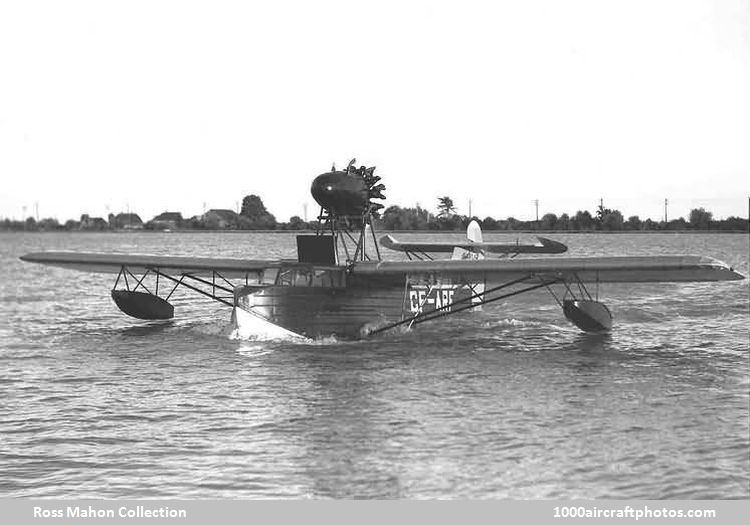The aircraft accommodated four people in an enclosed cabin which was entered through a hatch. Its design owed little to the parent company except for its airfoil Boeing 103, and its rudder shape was influenced by the rudder of the Boeing 204. The hull was made of Alclad duralumin sheet with longitudinal stiffening beads in the skin and showed a strong Saunders-Roe influence. The fabric covered wing had spruce spars and steel ribs. The tail surfaces were of welded steel-tube and fabric covered. A novel feature was the water rudder which retracted into the rudder proper.
While the evidence is not conclusive it appears that the Totem was first flown at Vancouver on June 16, 1932, by W.J. Holland. Power plant was a 300 hp Pratt & Whitney Wasp R-985 Junior A nine-cylinder air-cooled radial engine. On July 29, 1932, it was taken for its first preliminary full-load test by D.R. MacLaren. On September 25 it was reported that an official test had been made by A.H. Wilson, pilot, with R. Carter Guest, Civil Aviation Branch of the Department of National Defence, and Flight Lieutenant A.L. Johnson, Aeronautical Engineering Branch, RCAF, as official observers.
The Totem served all its life in British Columbia, with the occasional trip to Alaska. From May 1935 to January 1938 it was operated by Canadian Airways Ltd. and used primarily for fishery patrols. It was retired in 1942 and apparently scrapped. It was reported both on its official test and in service as having excellent characteristics both in the air and on the water. Unfortunately, the day of the flying boat was over, especially in Canada where in most are as they were inoperable for about five months each year, and only one Totem was made."
Span: 46 ft 0 in (14.02 m)
Length: 32 ft 9 in (9.98 m)
Height: 11 ft 3 in (3.43 m)
Wing area: 310 sq.ft (28.8 sq.m)
Empty weight: 2,317 lb (1,052 kg)
Loaded weight: 4,000 lb (1,816 kg)
Max speed: 122 mph (196 kmh)
Cruise speed: 99 mph (159 kmh)
Climb: 834 ft (254 m)/min
Service ceiling: 17,000 ft (5,181 m)
